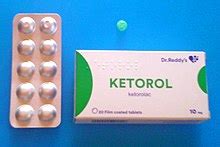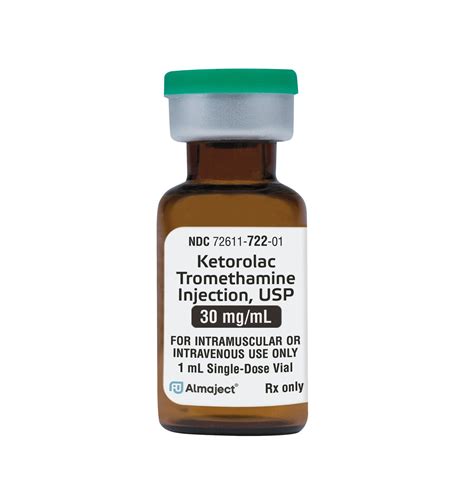Intro
Discover Ketorolac medication overview, a nonsteroidal anti-inflammatory drug (NSAID) for pain relief, inflammation reduction, and analgesic treatment, with uses, side effects, and interactions.
Ketorolac is a medication that has been widely used for its analgesic and anti-inflammatory properties. It belongs to the class of nonsteroidal anti-inflammatory drugs (NSAIDs) and is primarily used to treat moderate to severe pain. The medication works by inhibiting the production of prostaglandins, which are chemicals in the body that cause pain and inflammation. With its effectiveness in managing pain, ketorolac has become a popular choice among healthcare professionals for the treatment of various conditions, including post-operative pain, dental pain, and menstrual cramps.
The importance of ketorolac lies in its ability to provide quick and effective pain relief, making it an ideal option for patients who require immediate relief from pain and discomfort. Additionally, the medication has been shown to be as effective as morphine in some cases, making it a valuable alternative for patients who may be sensitive to opioids or have concerns about their potential for addiction. However, like all medications, ketorolac is not without its risks and side effects, and patients should be aware of these before starting treatment.
Ketorolac has been extensively studied, and its benefits and risks have been well-documented. The medication is available in various forms, including oral tablets, intramuscular injections, and eyedrops, making it a versatile option for treating a range of conditions. With its proven track record of effectiveness and relatively low risk of side effects, ketorolac has become a staple in the treatment of pain and inflammation. As research continues to uncover the full potential of ketorolac, it is likely that its use will expand, providing even more options for patients seeking relief from pain and discomfort.
Ketorolac Mechanism of Action

Benefits of Ketorolac
The benefits of ketorolac are numerous, making it a popular choice among healthcare professionals. Some of the key benefits of the medication include: * Effective pain relief: Ketorolac has been shown to be effective in treating moderate to severe pain, making it an ideal option for patients who require immediate relief. * Anti-inflammatory properties: The medication has anti-inflammatory properties, which can help reduce swelling and inflammation in the body. * Low risk of addiction: Unlike opioids, ketorolac has a low risk of addiction, making it a safer option for patients who require long-term pain management. * Versatile: The medication is available in various forms, including oral tablets, intramuscular injections, and eyedrops, making it a versatile option for treating a range of conditions.Ketorolac Uses and Indications

Risks and Side Effects
While ketorolac is generally well-tolerated, it is not without its risks and side effects. Some of the common side effects of the medication include: * Gastrointestinal upset: Ketorolac can cause gastrointestinal upset, including nausea, vomiting, and diarrhea. * Headache: The medication can cause headaches, which can be severe in some cases. * Dizziness: Ketorolac can cause dizziness and lightheadedness, which can increase the risk of falls. * Allergic reactions: Some patients may be allergic to ketorolac, which can cause severe reactions, including anaphylaxis.Ketorolac Dosage and Administration

Precautions and Warnings
Ketorolac is not suitable for all patients, and precautions and warnings should be taken into consideration before starting treatment. Some of the precautions and warnings include: * Pregnancy and breastfeeding: Ketorolac should be used with caution in pregnant and breastfeeding women, as it can cause harm to the fetus or baby. * Kidney and liver disease: The medication should be used with caution in patients with kidney or liver disease, as it can worsen these conditions. * Bleeding disorders: Ketorolac can increase the risk of bleeding, and patients with bleeding disorders should use the medication with caution.Ketorolac Interactions

Overdose and Toxicity
Ketorolac overdose can occur, and symptoms include: * Nausea and vomiting * Headache * Dizziness * Abdominal pain * Gastrointestinal bleedingIf an overdose is suspected, patients should seek medical attention immediately.
Ketorolac Alternatives

Conclusion and Future Directions
Ketorolac is a medication that has been widely used for its analgesic and anti-inflammatory properties. With its effectiveness in managing pain and relatively low risk of side effects, it has become a popular choice among healthcare professionals. However, like all medications, ketorolac is not without its risks and side effects, and patients should be aware of these before starting treatment. As research continues to uncover the full potential of ketorolac, it is likely that its use will expand, providing even more options for patients seeking relief from pain and discomfort.What is ketorolac used for?
+Ketorolac is used to treat moderate to severe pain, including post-operative pain, dental pain, and menstrual cramps.
How does ketorolac work?
+Ketorolac works by inhibiting the production of prostaglandins, which are chemicals in the body that cause pain and inflammation.
What are the common side effects of ketorolac?
+The common side effects of ketorolac include gastrointestinal upset, headache, dizziness, and allergic reactions.
Can I take ketorolac with other medications?
+Ketorolac can interact with other medications, including warfarin, aspirin, and ACE inhibitors. Patients should consult their doctor before taking ketorolac with other medications.
Is ketorolac addictive?
+Ketorolac has a low risk of addiction, making it a safer option for patients who require long-term pain management.
We hope this article has provided you with a comprehensive overview of ketorolac, its uses, benefits, and risks. If you have any further questions or would like to share your experiences with ketorolac, please don't hesitate to comment below. Additionally, if you found this article informative, please share it with others who may benefit from this information.
